
Nobody realizes how large Maine is until they drive up to its northernmost county: Aroostook, or simply The County, as Mainers call it. There is an almost imperceptible shift that happens somewhere on I-95 near Millinocket, where central yields to north. Cars thin, trees stretch taller, the sky seems to open up. I grew up on the cusp of this territory, and even I had only ever been to The County twice before now.

Exiting the highway en route to Maine Malthouse and Buck Farms, I soon discover why the region is also known as Potato Country. Small farm stands selling new potatoes dot the roadside, while green fields span the horizon. A few people do still refer to the region as “New England’s bread basket,” a once-true moniker that’s finding new relevance in 2021. Or maybe “New England’s beer basket” is more apt.
Maine Malthouse sits on Main Street in Mapleton, a town of around 2,000 people. Across the street, a little white sign outside the elementary school announces Little League championships. Beside it is a large Baptist church. The Bucks’ fields surround it all. The orbs of browning sunflowers droop heavily with seeds; they’ll soon be harvested for bird feed, one of several grain and seed crops that make up the 1,500-acre, diversified family farm.
When I meet Jake Buck, who manages the malthouse with his older brother Josh, he’s standing inside a red spray-painted outline of what will soon be a new warehouse. It’s a sunny August morning, still cool enough for the sweatshirt he has on over baggy shorts. A pair of reflective Ray Bans hides his eyes as he describes the planned expansion. Along with this new, 8,000-square-foot storage building, which will go up right behind the old one, the business will be adding a second Saladin box malting vessel. Including the separate floor-malting operation—which currently makes up about 20% of the total production, and is devoted to malting specialty grains like white wheat and oats—the malthouse’s capacity is now up to 2,000 tons of malted grain a year, primarily sent to breweries in Maine, plus a few elsewhere in New England.
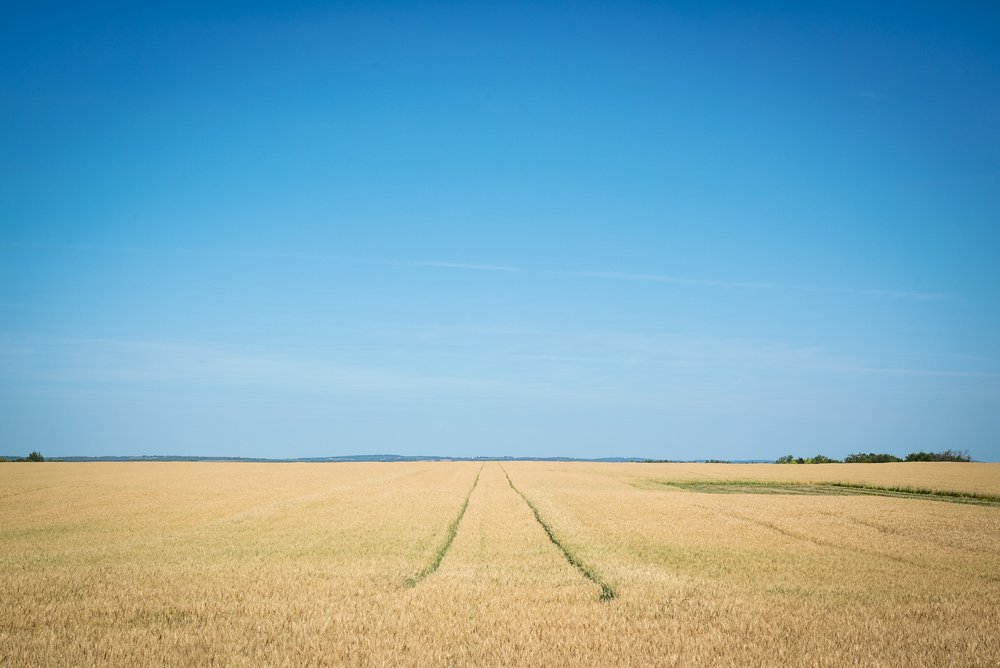

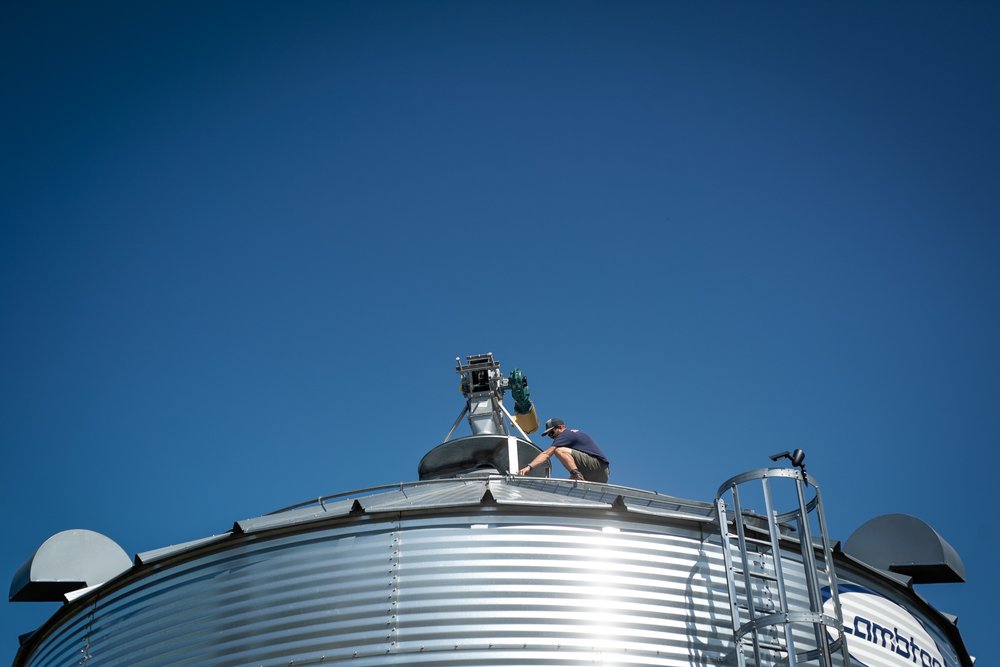
Though the malthouse had initially grown more slowly than the brothers’ ambitious start-up plan had envisioned, 28-year-old Jake says they hadn’t imagined their latest phase of expansion would have happened so soon. While Maine Malthouse credits that evolution to the 100 or so breweries and distilleries it works with, one brewery stands out more than the others.
We kind of slapped everybody in the face with this. It’s like, ‘Oh yeah, we’re a malthouse.’ And they have no idea what we’re doing, who we are, what our reputation is.
In early 2017, Portland, Maine’s Allagash Brewing Company made a public pledge to use 1 million pounds of Maine-grown, Maine-processed grains by the end of 2021, giving itself and the industry five years to scale up. Since then, Allagash and the farms and processors it works with have grown. Those relationships have also deepened, as both brewery and producers have helped each other challenge boundaries of quality and creativity.
From Potatoes to Malt
Buck Farms began in 1958, on 40 acres the brothers’ grandfather planted with potatoes when he was straight out of high school. The farm grew alongside the family, increasing in acreage in reverse proportion to Maine’s contracting potato industry. By the time Jake and his twin brother Caleb finished college, there wasn’t enough room in the family business to take them on, a common problem among farm families. Their father Bruce, who was by then running the farm, challenged them to come up with a plan. After a short stint with hops, they settled on malting barley, since it was already a product the farm grew as a rotation crop for potatoes, used to add nutrients back into the soil before being sold as animal feed.
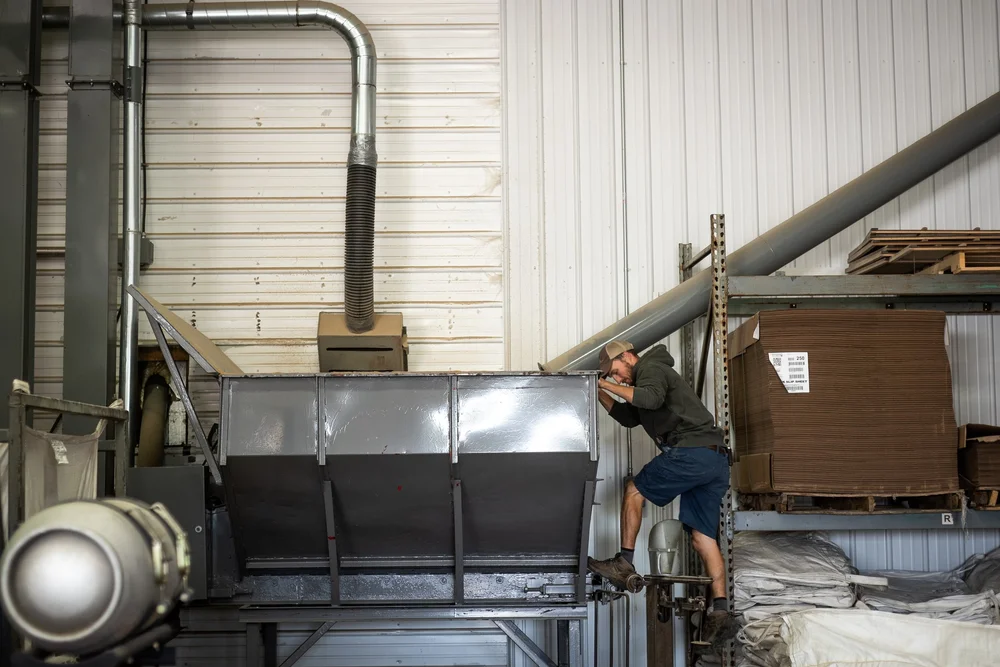

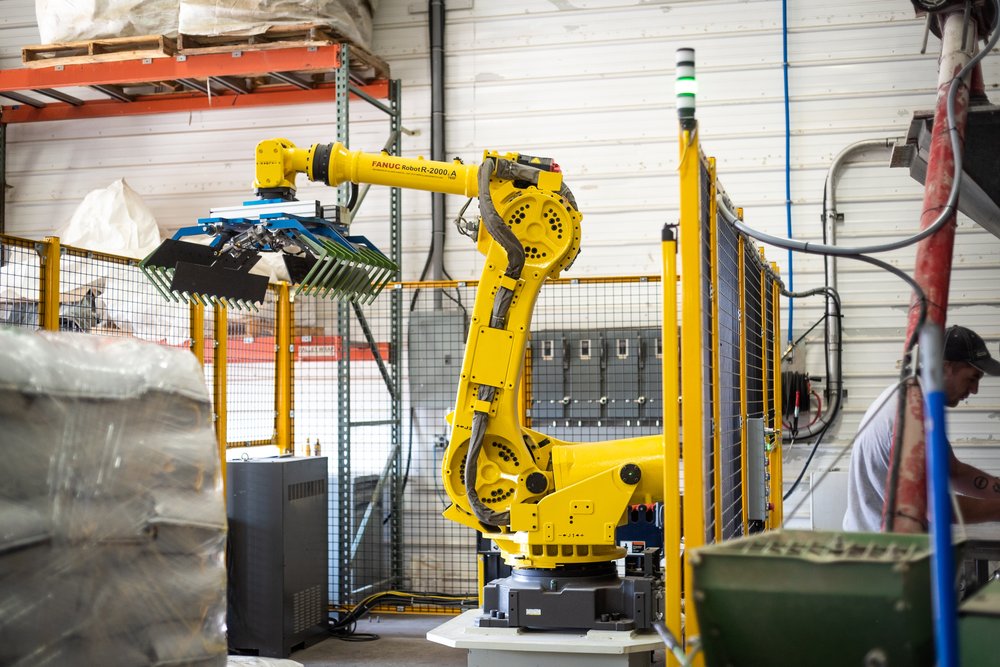
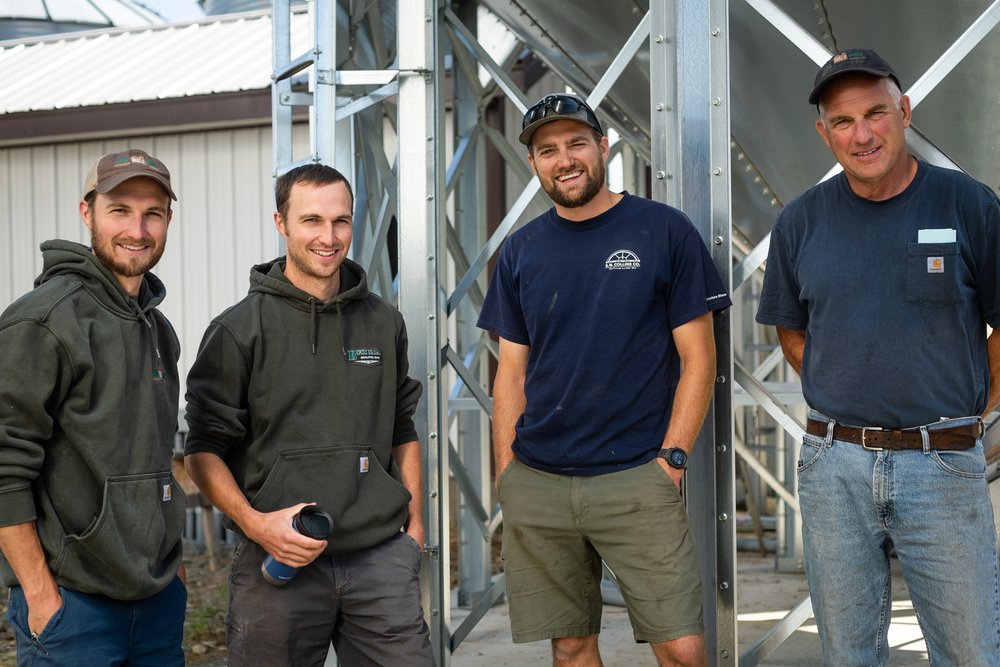
In 2015, just weeks after clearing a storage building of potatoes destined to become French fries, the Buck brothers turned it into a malthouse, built mostly by themselves, and taught themselves to malt. Then Jake and Josh loaded their pickup with 50-pound sacks of their first batch of malted barley, and left on a statewide tour of Maine’s breweries—which numbered about 40 at the time, compared to roughly 150 today—to see if any of them were interested in using their malt.
Most responses were cool, or at best lukewarm.
Noah Bissell, head brewer and co-owner of Portland’s Bissell Brothers Brewing Company, recalls the Buck boys, as the industry now affectionately calls them, hauling a bag of grain into the brewery for them to sample.
“It was kind of a surprise to me, and I definitely met it with a fair amount of skepticism with knowing how difficult malting was … but then I used it and, of course it’s base malt, so it wasn’t like, ‘Man the flavors are crazy,’ but in terms of the numbers it was right there.”
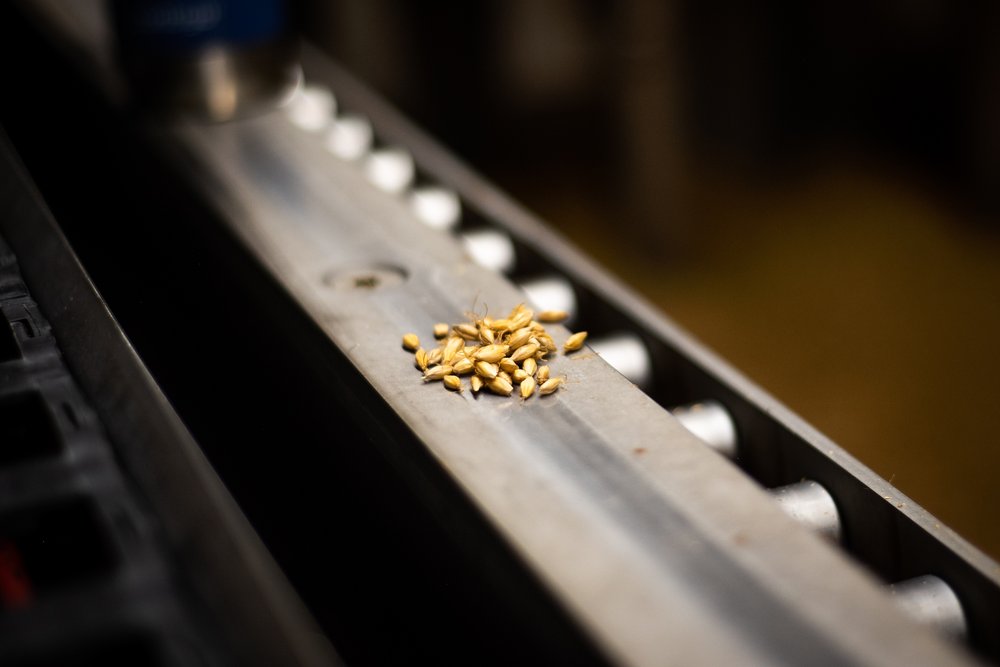

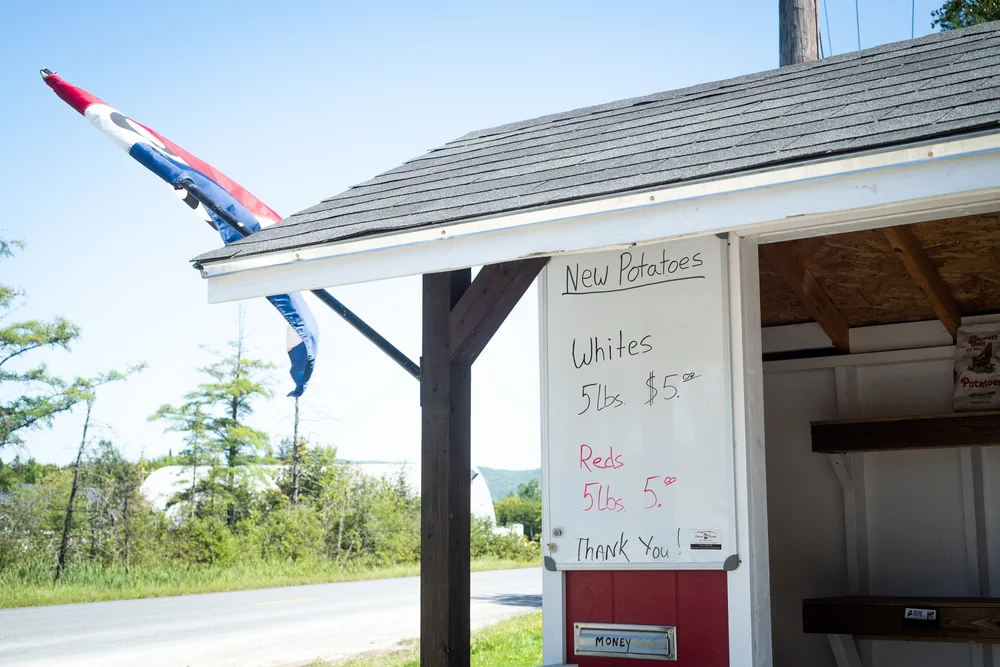

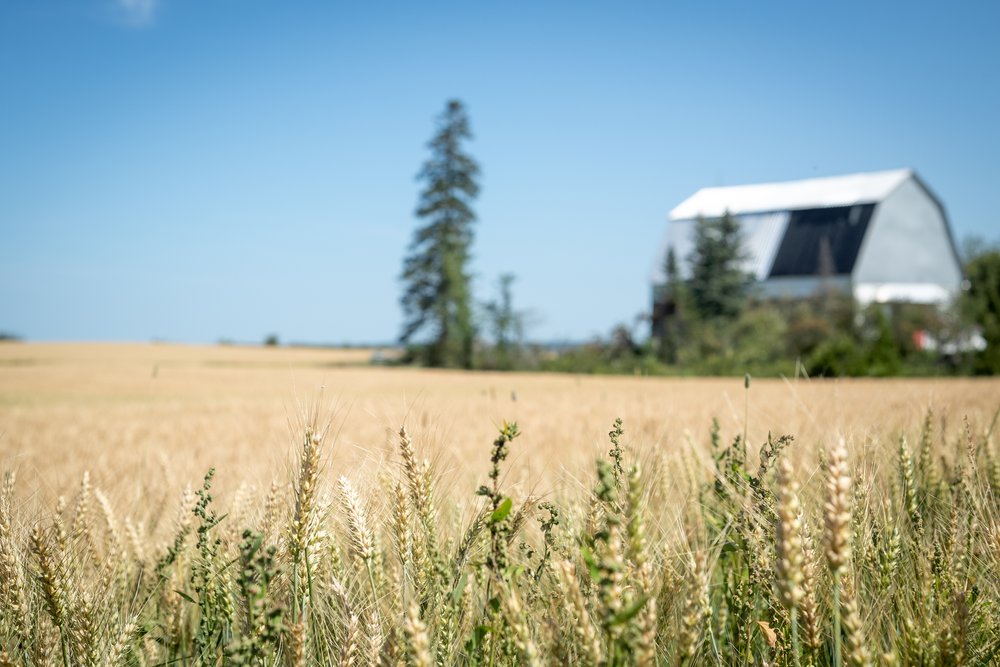
Allagash’s brewmaster Jason Perkins and brewhouse manager Branch Rothschild, while sharing a bit of Bissell’s skepticism, were also curious about this new, local product, especially since they’d already been using some grains from Maine Grains, a central Maine grist mill that opened in 2012, and Aroostook County’s Aurora Mills. Recently, they’d been playing around with another sample malt drop from Blue Ox Malthouse, which started the same year as Maine Malthouse.
For a brewery like Allagash to make a commitment to using local malt sends a significant signal to the rest of the industry in Maine, but they’re nationally respected as well. That’s a huge vote of confidence in us and in craft malt as an industry.
The Buck brothers were surprised to be met by Allagash’s head brewer, and Perkins’ enthusiasm was one of the trip’s highlights. Jake Buck says it gave them hope to continue the endeavor, but it took about a year before they started getting regular orders.
“We kind of slapped everybody in the face with this,” he recalls. “It’s like, ‘Oh yeah, we’re a malthouse.’ And they have no idea what we’re doing, who we are, what our reputation is.”
After that first year, their malt began to gain a reputation among Maine’s tight-knit brewing community. The Bucks began to see steadier sales and regular customers, though many still use their malt for one-off or seasonal recipes.
New Growth
Earlier in the summer, on a muggy June morning, I sat down with Perkins and Rothschild outside Allagash to talk about their journey with Maine grains as they approach the 1-million mark. The Portland brewery shares a neighborhood with a handful of younger breweries that together converted the strip of Industrial Way into a hip beer alley that feels far removed from the farms it works with. That is, unless you know what’s in the four silos peeking from behind the brewery (one of which is exclusively dedicated to Maine grains).
Allagash’s brewing team continued to experiment with the grains, and as they developed relationships with the new malthouses and farmers, they began to understand the potential for more grains to be grown in the state—and to think about the most forceful way the brewery could support those local producers.
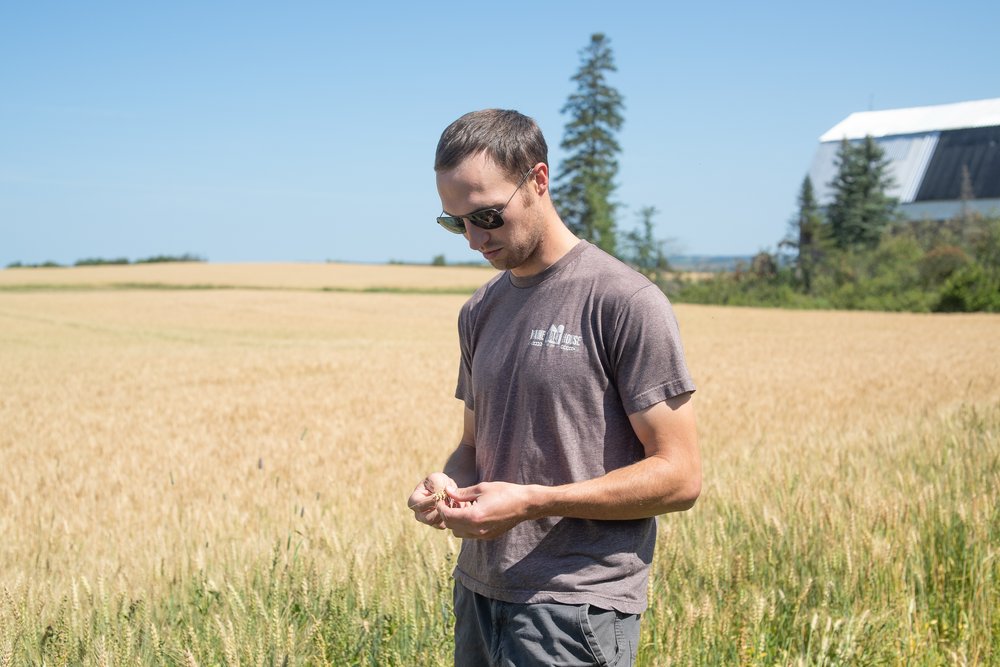
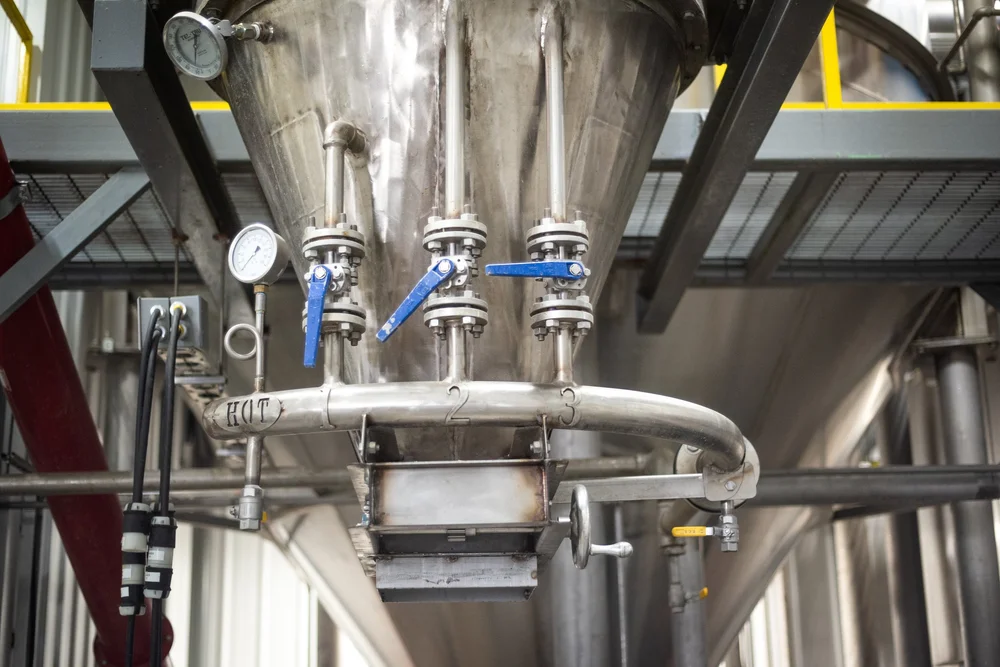

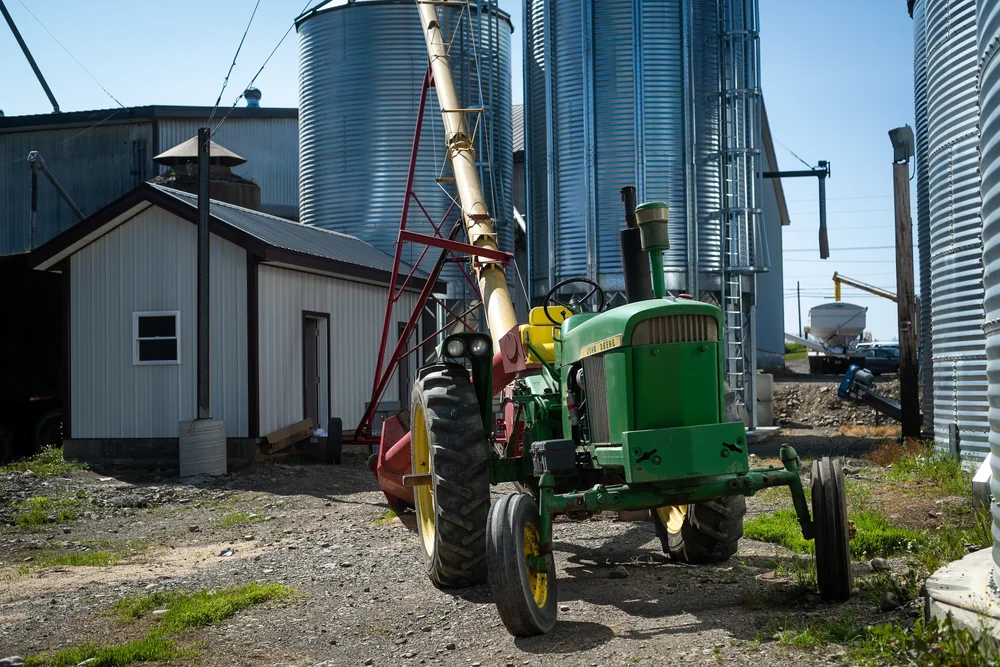
In 2017, Allagash was using about 60,000 pounds of locally grown and processed grains when its founder and owner, Rob Tod, decided it was time to make a stronger commitment with a measurable goal to grow their usage over the next five years. But it couldn’t happen instantly: In addition to cost barriers, there just wasn’t enough infrastructure available in the state for the brewery to access 1 million pounds of Maine grain in 2017.
Perkins says this type of long-term commitment also forced the brewing team’s hand, pushing them to find more ways to incorporate the local product into their beers.
The bottom line is that local grain is a lot more expensive. And this isn’t complaining about the farmers, because they need to sustain their businesses. Really, that higher price puts more pressure on us to communicate with our consumers what makes our beer special, and the sort of lengths we’re going to to support local agriculture.
Allagash’s Sixteen Counties Golden Ale is the perfect example of this approach. It’s a beer that was constructed backwards, says Perkins, leaning back in his chair, safety glasses still sitting atop his ball cap. Rather than starting with certain flavors in mind and then finding the ingredients to get there, Sixteen Counties, named for the number of counties in Maine, was built around the flavors the brewers found in the local grains.
The beer has changed somewhat since its first batch in 2016, which was darker, and it’s a good example of how Maine Malthouse itself has evolved. Over the years, as the malthouse refined its process, its base malt got lighter and more consistent, reflected in the color and flavor of Sixteen Counties, which now also uses Blue Ox’s malt.
While many of Allagash’s specialty beers highlight local grains, and it’s easy to build a recipe with them from the start, “to actually get that volume up to a million pounds, we have to get it into our core brands,” says the mustachioed Rothschild, dressed in blue brewer’s coveralls.


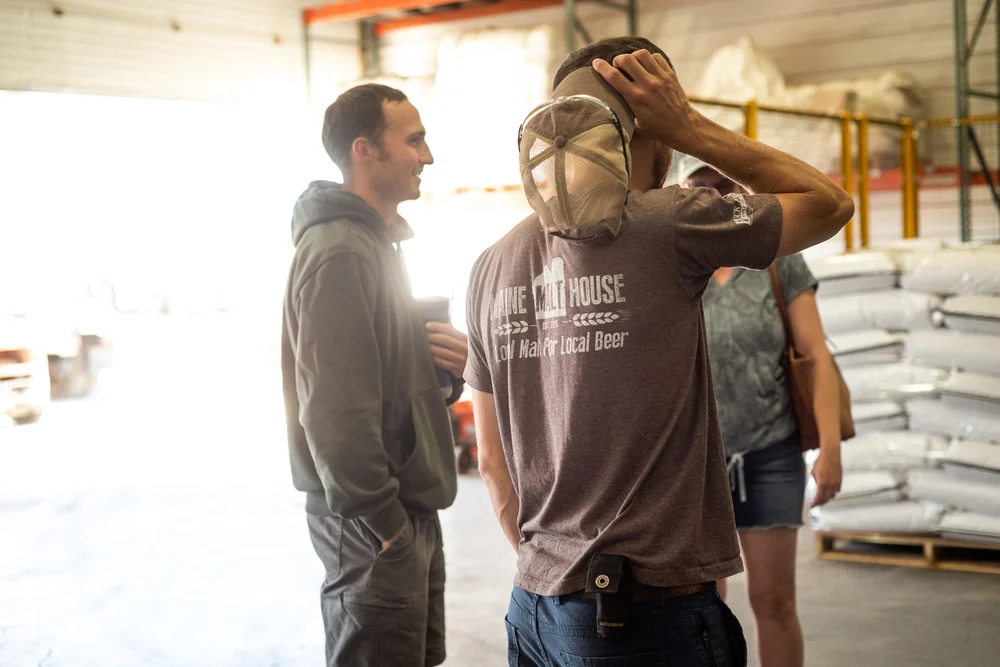

Rothschild, who has worked at Allagash for 13 years (and who worked with local grains as a baker before that), made it clear they weren’t going to sacrifice quality in order to use local. Allagash White was the ultimate test.
Maintaining consistency in flavor in the 25-year-old flagship recipe was a challenge, but not as much of one as they feared. The iconic, Belgian-style Witbier launched Allagash in 1995, and still carries the brewery in terms of sales. Now, it contains some percentage of local grains in every batch.
It’s an admittedly slow process to switch up the ingredients in a beer like White. Each grain change—flaked oats, raw wheat, malted wheat, and malted barley—goes through a stringent validation process, which involves running test batches through a centrifuge and sensory analysis in the onsite quality control lab. The final hurdle is the triangle test, when a trained sensory panel determines whether there are any differences among three samples (two controls and one test batch). When the panel can’t detect any difference between a White made with the local ingredients and one made with the older recipe, it’s good to go.
The brew team started with oats, because less-processed ingredients are easiest. Now, because they’re riding out an existing contract with their original supplier, they alternate local flaked oats from Aurora Mills (which, founded in 2001, is a pioneer in Maine’s local grains movement) and oats from the Midwest. The wheat goes through a similar alternating cycle. The malted barley is the only ingredient it was easier to employ in a blend, so about 10% of White’s barley malt is local, while the remaining portion comes from Briess, the brewery’s primary malt supplier.
It really can’t be overstated how much universal respect they have in the industry and how they’re really looked at as kind of a beacon of what’s happening and what’s the right way to be a brewery. And seeing that laid out it also gave me confidence that this [local malts] had enough inertia to get over whatever that initial hump was.
But before Allagash could even begin the validation process for local wheat, it had to find someone in Maine to cultivate the variety of white wheat it needed. When the brewery approached the Bucks to see if they could grow it, they were game to try.
Trialing a new agricultural product in a climate where it hasn’t previously been planted is much slower than brewery trials, since you’re working within the confines of growing seasons and the whims of nature. (As a comparison, it takes on average 10 years for a new hop variety to be ready for brewery use.) Luckily the white wheat grew well, and after three years of expanding acreage, Maine Malthouse is up to 300 acres: still not enough for a consistent supply for the brewery, but a good start.
Facing Challenges
Though Perkins says quality is what he gets asked about the most when it comes to local grain, that hasn’t been the biggest challenge. He vouches for the quality of Maine malt time and again. It’s the budgeting that gets complicated.
Even when using its regular malt supplier, Allagash has to do trials with each different crop year to adjust for any seasonal variations. Both Perkins and Rothschild say that the local suppliers are better at communicating these changes, and that communication as a whole is easier. That makes sense, since brewers and farmers have built relationships around campfires and riding side by side in the combine during annual trips to The County each harvest.
Instead, Perkins reluctantly admits cost is the biggest challenge. “The bottom line is that local grain is a lot more expensive,” he says. “And this isn’t complaining about the farmers, because they need to sustain their businesses. Really, that higher price puts more pressure on us to communicate with our consumers what makes our beer special, and the sort of lengths we’re going to to support local agriculture.”


Weather conditions—which factor significantly into the quality of any agricultural product, beer included—may be next on the list of challenges. Allagash was ready to use more grain, but because Maine was in a rare drought last year, reduced crop yields meant the malthouse didn’t have enough to sell them.
“It was bad,” Buck says when I ask him about the drought. They weren’t able to use any of their barley for malting, he says, since it must pass higher quality specifications. Instead, they sold it as feed, which gets a much lower price on the commodities market. Since COVID slowed malt sales, they were at least able to malt some grain they’d stored from previous years.
Buck rubs a barley grain between his fingers in a field that’s a 10-minute drive from the malthouse. “Still a bit mealy,” he says. It will be ready for harvest in about a week, he predicts.
The Bucks have had to work hard to keep their product as consistent as possible despite changing climatic conditions, especially since they also malt grain from other farms. They’ve had to train up the farmers, who were used to growing barley for feed, which comes with lower quality expectations. They’ve also invested in equipment that allows them to process otherwise unsuitable grain to make it usable for malt. The difference of a few percentage points in moisture content is a big deal: If the grain is cut at 15% but they need it at 13.5%, they can run it through their new dryer, which blows continuous hot air through the grain until the precise specifications are met.



Blue Ox Malthouse, in an industrial park in Lisbon, in central Maine, has also had to work with its farmers on quality. Since Blue Ox, which Allagash sources malt from in roughly the same quantity as Maine Malthouse, is not an on-farm operation, this requires a different approach.
“Local doesn’t always mean quality,” says owner Joel Alex. “But it can and should.” Alex feels there’s still a lot of missing infrastructure needed to provide the highest level of quality. For instance: The malthouse needs the farmers to clean their grains before it reaches them. He says there’s a lot of grain grown in Maine, but the lack of cleaning, drying, and storage infrastructure, along with the knowledge base needed to grow malt-quality grain, has been a barrier to increasing the size of their operation, which currently malts just over a million pounds of raw grain a year by floor-malting. Alex says he knows farmers who could grow him more grain if they were to find a way to scale up the state’s missing middleman infrastructure.
The demand down the supply chain is also key. “For a brewery like Allagash to make a commitment to using local malt sends a significant signal to the rest of the industry in Maine, but they’re nationally respected as well,” says Alex. “That’s a huge vote of confidence in us and in craft malt as an industry.”



The Big Grain Picture
Attend any craft grains conference, like those held by Washington’s Cascadia Grains, the national Craft Maltsters Guild, or the newly formed Northeast Grainshed Alliance, and you’ll hear whispers and even shouts, followed by cheers, that malt is the new hops. But even the most enthusiastic of local grain evangelists know it will never catch up to Big Malt, and maybe never should.
“Because of their smaller scale, craft maltsters can, and do, frequently experiment with different grains and processes,” says Aaron MacLeod, director of Hartwick College’s Center for Craft Food and Beverage. “As a result, they create a wide range of creative and innovative malts leading to the phrase, ‘Malt is the new hops.’ It is the craft maltsters that have brought malt back into the minds of the craft brewers and [are] inspiring a host of great new brews.”
But has the industry done enough to bring craft malt into the minds of consumers?




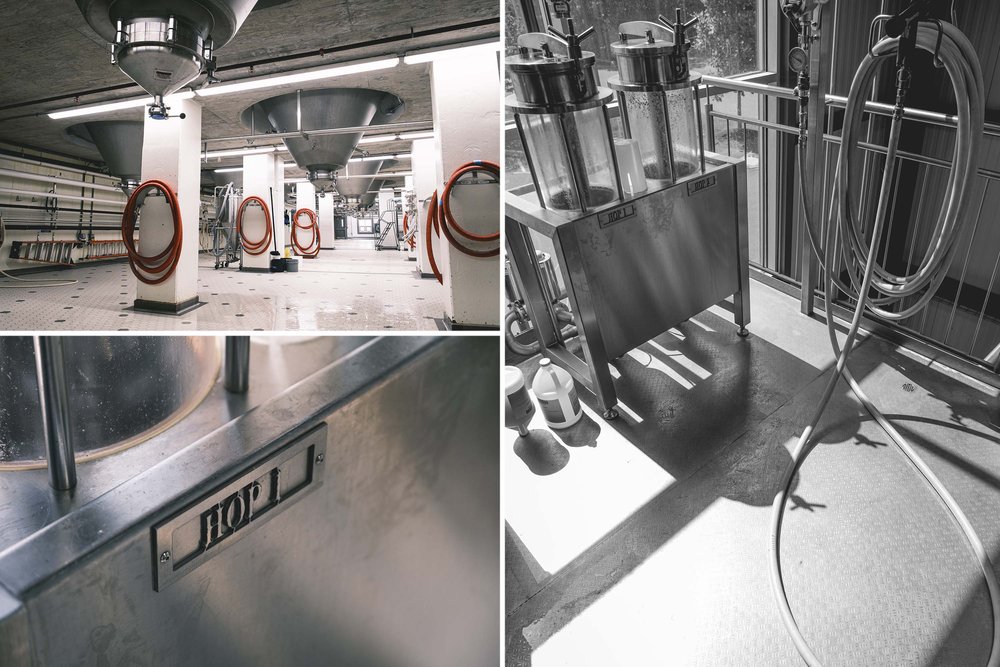
Craft malt, which comes from approximately 100 small malthouses in North America, accounts for only 1% of all malt going to craft breweries in the U.S. The other 99% comes from large commercial malthouses in the Western states and western Canada, where the majority of barley is grown, according to MacLeod. Even after hitting the 1-million mark, local grain will only be a sixth of Allagash’s total grain use this year.
“Your casual craft beer drinkers have been hops-obsessed for basically a decade now,” says Sean Sullivan, executive director of the Maine Brewers’ Guild. But there isn’t the same excitement for or consumer knowledge of malt.
“Do consumers care?” asks Sullivan. “And do they care enough that it’s worth paying more for?”
Perkins doesn’t think craft malt can ever be as sexy as hops, “but even if they can capture 10% of it, that’s enough.”
He acknowledges the first step in consumer education is getting beer drinkers to recognize grains as an ingredient. An old joke of his is that everyone thinks beer is made of water, yeast, and hops. He finds that many people are still surprised to know that there’s grain in beer. That fundamental needs to be addressed before you can begin to talk about local grains.
“I do think there’s a shift, but it’s going to be slow,” he says. “The variety of flavors, the intensity of flavors that you get from hops, it’s going to be hard to capture that. But if you get a little of that, if you get people talking about local flavor in grains, I think that would help a lot.”
Brett Willis, Allagash’s marketing specialist, says that it’s in a brewery’s best interest to educate the consumer about local malt. Still, he admits they’re not slapping the local label on everything. You probably won’t see “made with local malts” on an Allagash White because “it’s awesome, but it’s not one of the more important parts of that beer if we’re thinking about communicating what that beer is like to the customer. But when it comes to a beer like Sixteen Counties or the [taproom-only] From Maine, With Love [pilot] series, it becomes more important from a marketing aspect.”





More important perhaps to Allagash is that helping local farmers aligns with the company’s values—and supporting the local community is a key part of being B Corp certified, which Allagash achieved in 2019.
“I know Allagash, and they don’t do things just to make the news,” says Sullivan. “In fact, often, it’s just the opposite … It was helpful that Allagash made that [1 million pounds of grain] statement because they are certainly a leader, and they’re known for their expertise, while also not chasing trends. I think the fact that they made that statement certainly caused a lot of Maine brewers to perk up and consider how they might do the same, or what options might exist to use local ingredients.”
“It was awesome [when Allagash made the announcement], but there’s also the positively competitive part of me that was like, ‘Well, we are too,’” says Bissell. “It really can’t be overstated how much universal respect they have in the industry and how they’re really looked at as kind of a beacon of what’s happening and what’s the right way to be a brewery. And seeing that laid out it also gave me confidence that this [local malts] had enough inertia to get over whatever that initial hump was.”
Bissell has scaled up his brewery (the only other besides Allagash that buys grain from Maine Malthouse by the silo-full) to use around 600,000 pounds of Maine grains this year.
“We haven’t been great about helping with the local grain narrative,” Bissell admits, though most of the brewery’s cans have a tiny “Made with Maine malt” line printed on them. “It’s tricky to do right and also not feel like you’re just self-inflating. That’s not the vibe from Allagash at all, but it’s always been difficult for us to communicate actually how much of this stuff we’re using and how expensive it is by comparison. We’re getting better at it.”
Consumer education is one of the primary goals of groups like the Northeast Grainshed Alliance, which gives marketing tools to brewers, like a calculator to determine how many square feet of local grains go into each pint. The Craft Maltsters Guild’s Craft Malt Certified Seal program, which puts its stamp on breweries that pledge to use at least 10% locally sourced grains, is also an effort in this direction.




Back to Work
At the end of my farm visit, I sit in a combine cab with Jared Buck, who has been working harvest since he was a kid, back when it was mostly potatoes. We’re perched high above the field, watching the blades work through the rye like a comb running through hair over and over again, with the only break in the rhythm coming from the occasional bird flitting up from the stalks in the nick of time.
I ask Jared, who has been driving a combine since before he had a driver’s license, if he zones out like I feel myself doing, since it’s GPS-powered and mostly automated now. He says no, there’s always something to watch out for. Just today, the steering wheel, still needed for certain maneuvers, broke, he says with a sigh.
A few months from now, on a cold December day—while brewing, in all probability, a batch of White—Allagash plans to hit its goal of 1 million pounds of Maine grains. Tod and Perkins haven’t given much thought to how they’ll celebrate the milestone. They’ll probably share a small toast among employees, maybe squeezed into what used to be the pre-COVID taproom and is now makeshift storage and office space. Or maybe beside the keg of their latest pilot beer, which sits off to the side on the brewhouse floor like the best possible version of a company water cooler.
“But after that, we’ll be back at it, figuring out how we can build on this program,” says Tod. “Can we get to 1.5 million pounds? 2 million pounds? This is an exciting step for us, but it’s just that, a step that we can use to keep improving.”


Words by Catie Joyce-Bulay
Photos by Jennifer Heidrich
+ Mike Lianza